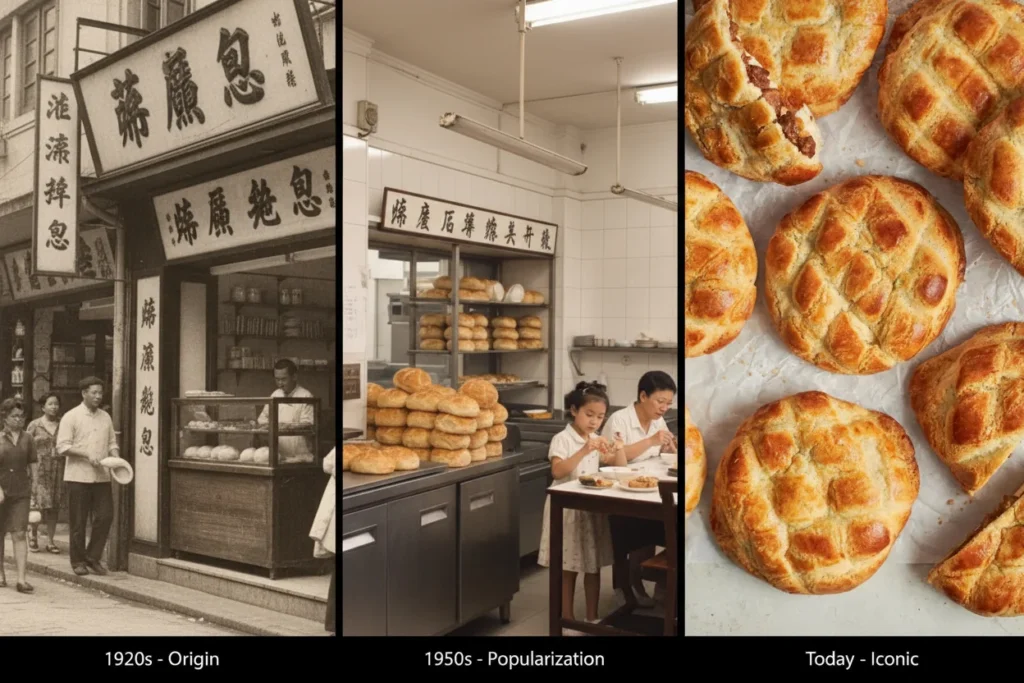Despite the name, the classic Hong Kong pineapple bun (bolo bao) contains no pineapple at all. Its name comes from the golden, crackly crust that resembles the fruit’s rough exterior. Beneath that sugary shell lies a warm, fluffy bun — sweet, buttery, and irresistibly soft.
Born in Hong Kong’s post-war era, the pineapple bun became a symbol of comfort and creativity. Local bakeries blended Western baking methods with Cantonese flavors, creating a treat that quickly found its place on every Hong Kong café and bakery menu. Today, it’s often served warm with a slab of melting butter — a simple pleasure that defines Hong Kong’s bakery culture.
History of the Pineapple Bun
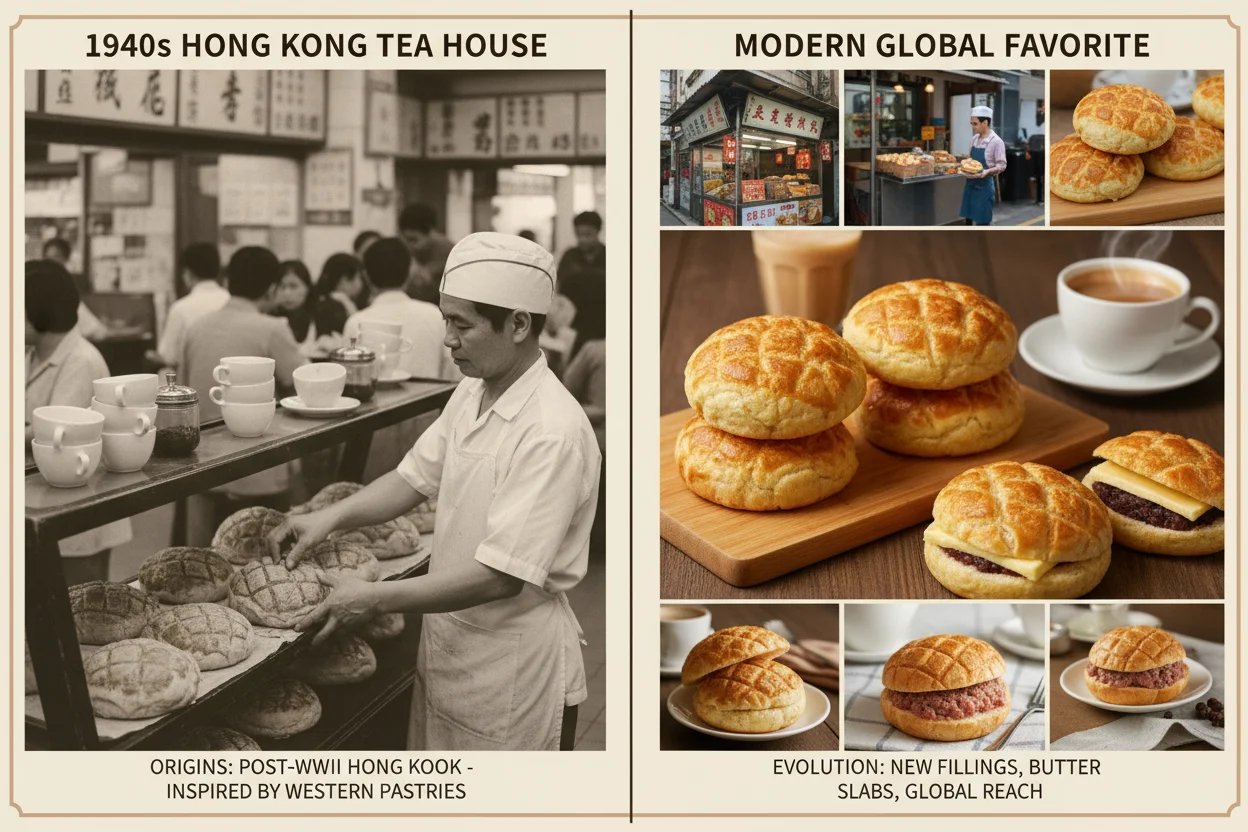
The pineapple bun, or bo lo bao, has come a long way since its humble beginnings in 1940s Hong Kong — a time when local bakeries were booming after World War II. It stands as a symbol of the city’s cultural fusion and the ingenuity of Hong Kong bakers who turned simple ingredients into something unforgettable. What started as a creative twist on Western pastries has become a timeless classic — a golden, crackly-topped icon that defines Hong Kong’s vibrant culinary heritage.
Origins of the Name
The name “pineapple bun” is somewhat misleading, as the pastry contains no actual pineapple. The crust’s pattern resembles the exterior of a pineapple, and the name was likely a marketing strategy to evoke tropical imagery, enhancing its appeal. This whimsical naming speaks to the playful spirit of Hong Kong’s culinary scene.
Development in Hong Kong
Originally a simple, homemade treat, the pineapple bun gained popularity in tea houses and bakeries around the 1950s. You can find it served warm, often with a slice of butter melted inside, creating a delightful contrast between the soft bread and the crisp topping. The bun’s accessibility and affordability made it a staple for locals across generations.
The development of the pineapple bun in Hong Kong reflects broader social changes, especially during the economic boom of the 1960s and 70s. Bakeries began to innovate, experimenting with flavors and fillings, which sparked interest beyond the traditional version. Today, you’ll discover variations filled with custard, lotus seed paste, or even a savory twist, demonstrating the bun’s versatility and the creative spirit of Hong Kong’s baking culture. Street vendors and renowned bakeries alike continue to delight locals and tourists, ensuring the pineapple bun remains a cherished symbol of the city’s culinary heritage.
Ingredients and Preparation
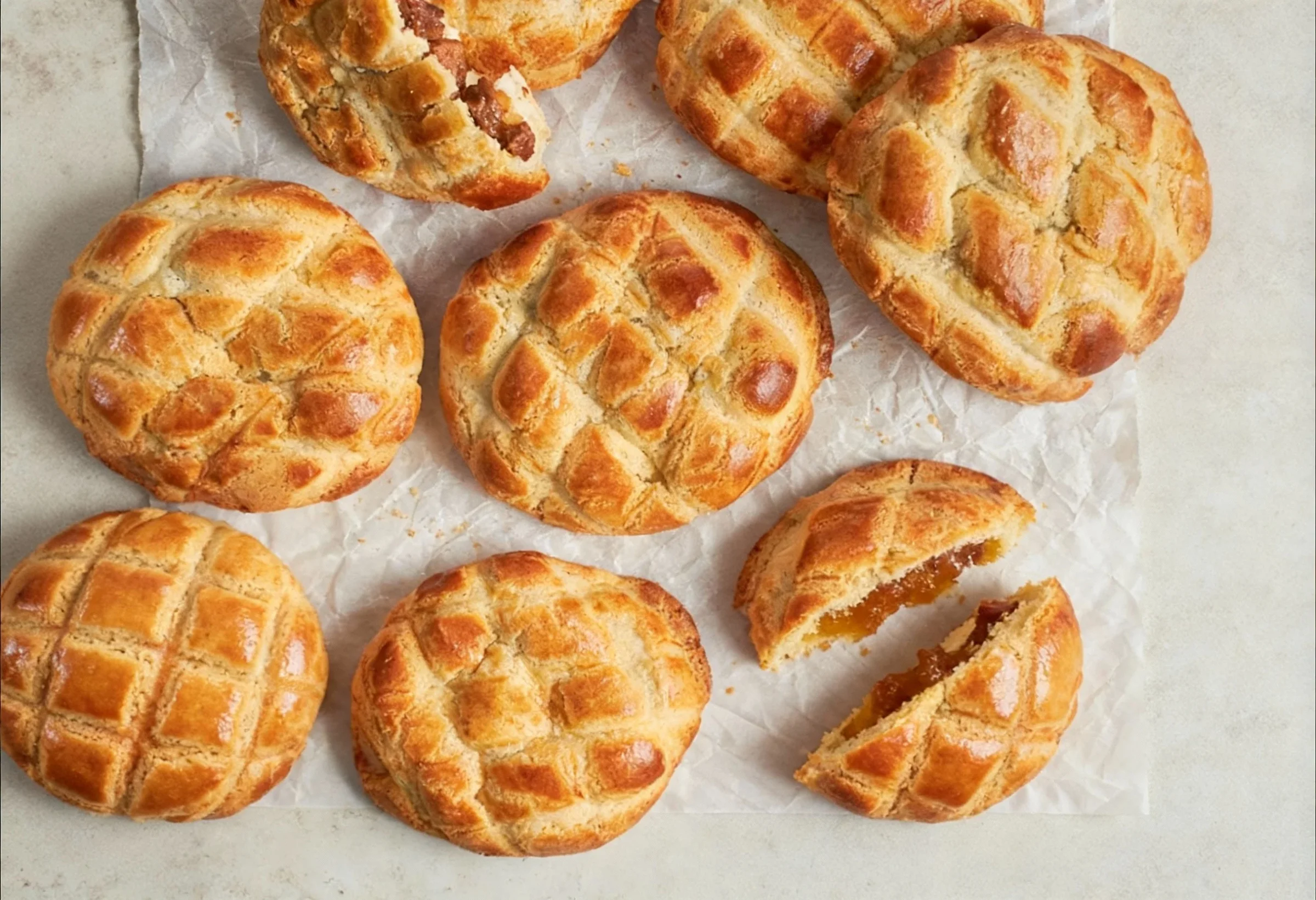
Pineapple buns come together through a harmonious blend of simple yet crucial ingredients, showcasing the beauty of both texture and flavor. The soft bun consists primarily of flour, sugar, butter, yeast, and milk, while the sweet topping features flour, sugar, butter, and an egg wash for sheen. These components create a comforting pastry that balances sweetness with buttery depth, inviting you to experience each bite.
Pineapple Bun in Daily Life
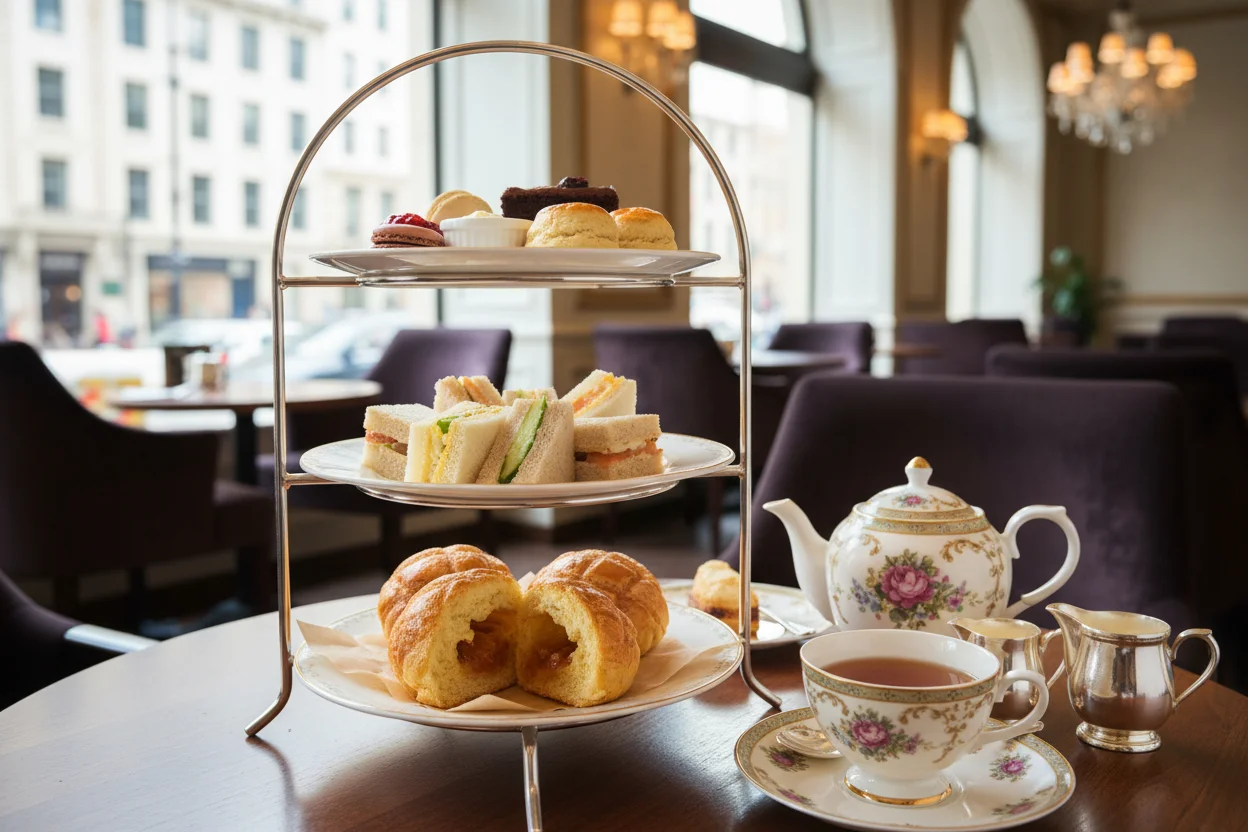
In your daily routine, the pineapple bun is more than just a snack; it’s a versatile companion for breakfast or afternoon tea. You might enjoy it fresh from the oven with a pat of butter, or as a simple yet satisfying grab-and-go option during hectic workdays. Its comforting taste evokes memories of shared moments in bustling bakeries, making it an integral part of everyday life in Hong Kong.
Symbol of Hong Kong Cuisine
Pineapple buns are emblematic of Hong Kong’s diverse culinary heritage, reflecting years of cultural amalgamation. Often considered a quintimperative local snack, you’ll encounter this pastry in various eateries, from traditional bakeries to modern cafes. It stands as a testament to the city’s creativity, marrying Western baking techniques with unique flavors, thus making it an imperative symbol of Hong Kong’s vibrant food scene.
This sweet pastry showcases how, over time, culinary practices have intermixed in Hong Kong. Originating in the early 20th century, the pineapple bun represents the city’s adaptation of Western baking traditions infused with local tastes. Whether served during family gatherings or enjoyed solo, its strategic presence in local menus highlights Hong Kong’s ability to embrace and celebrate culinary diversity, solidifying its status as a signature dish within the region’s gastronomic offerings.
Variations of Pineapple Bun
Pineapple bun variations are a delightful testament to creativity, with many interpretations around Hong Kong and beyond. From local bakeries to international hotspots, each version offers a unique twist on the classic, incorporating different ingredients and styles that cater to diverse tastes.
Different Fillings
You can enjoy pineapple buns with a range of fillings, transforming the experience with each bite. Popular fillings include custard, red bean paste, and even butter, which melts inside the warm bun, adding a rich, creamy texture. Some bakeries experiment with flavors like matcha and chocolate, appealing to modern palates.
Regional Twists
Regional variations provide intriguing interpretations of the pineapple bun, showcasing local tastes and ingredients. In Macau, you might find a version filled with sweet coconut, while other areas might favor fillings like fruit preserves or cream cheese, catering to both local and tourist preferences.
In Guangdong province, you might encounter a deep-fried pineapple bun that takes the beloved pastry to new heights, offering a crispy exterior that contrasts with the soft, fluffy interior. Different regions of Southeast Asia have also embraced the pineapple bun, incorporating unique spices or ingredients like pandan or kaya, thereby giving you the chance to sample flavors that reflect the local culture and culinary heritage.
Where to Find the Best Pineapple Buns
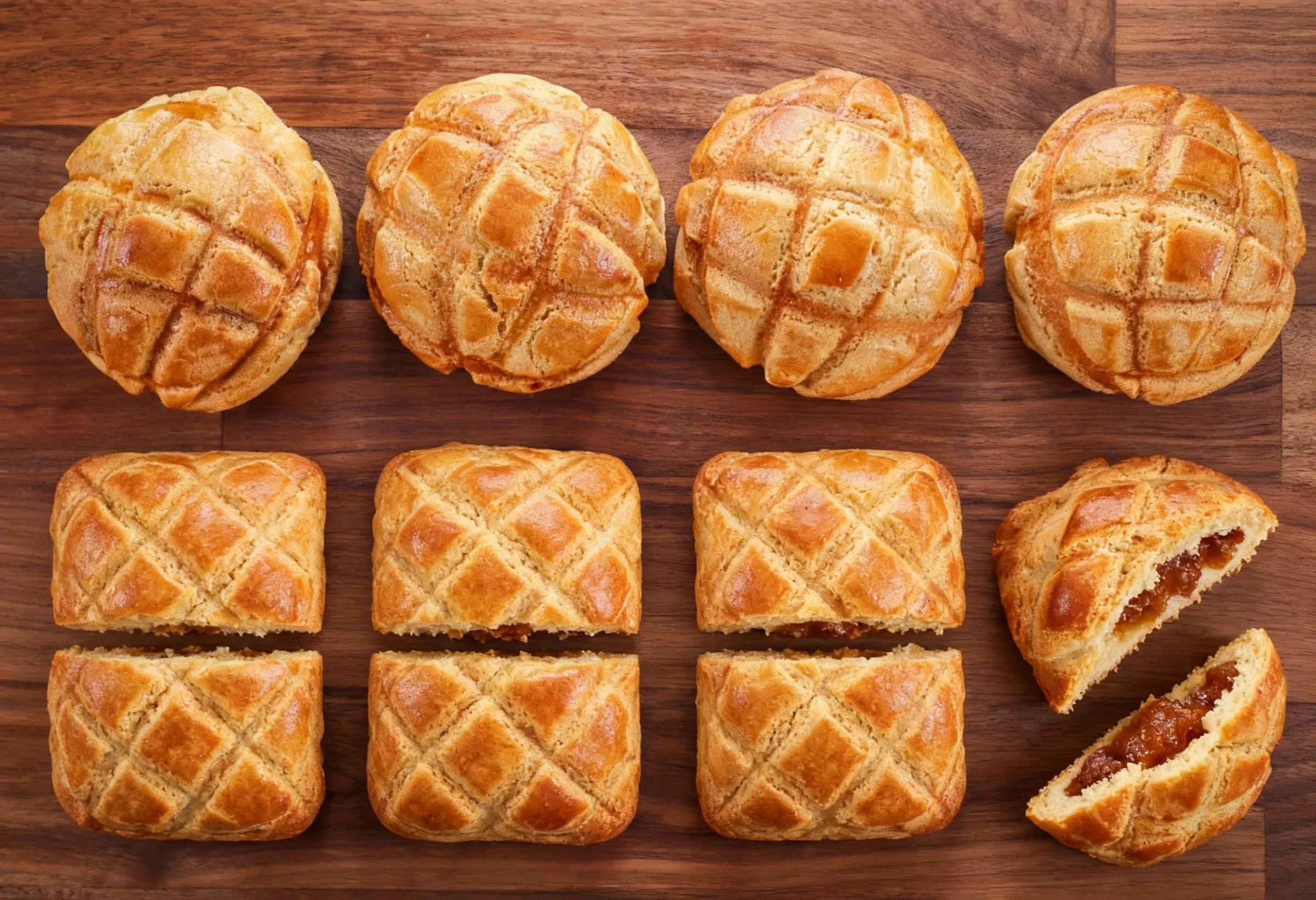
Exploring the vibrant streets of Hong Kong reveals numerous spots where you can savor delectable pineapple buns. From renowned bakeries to local favorites, each establishment offers a unique twist on this beloved treat. Whether you seek authenticity or a quirky spin, your options range from bustling markets to charming neighborhood shops.
Famous Bakeries
In Hong Kong, famous bakeries like Maxims and Kam Fung are celebrated for their rich heritage and outstanding pineapple buns. These sources draw crowds eager to indulge in their perfectly baked pastries, combining soft, fluffy bread with a sweet, crumbly crust. Locals often claim these spots as the gold standard for pineapple buns, each having its secret recipe that adds to the charm.
Local Favorites
Among the local favorites, places like Hang Heung and Tai Cheong Bakery offer a more authentic experience, often frequented by residents. Their pineapple buns are beloved not just for their taste but also for the nostalgia they evoke in customers. At Hang Heung, the buns come fresh out of the oven, enticing you with their warm aroma, while Tai Cheong’s version is often praised for its slightly crunchy topping and melt-in-your-mouth texture. These bakeries not only serve food but also nourish a cultural experience that resonates deeply within the community.
Pineapple Bun Recipes
Exploring pineapple bun recipes allows you to discover the delightful balance of flavors and textures that make this pastry a favorite. Whether you want to recreate the traditional version or try innovative twists, each recipe brings its own charm and taste. Get ready to initiate on a culinary adventure with these irresistible variations.
Traditional Recipe
The traditional pineapple bun recipe focuses on a soft, buttery bread with a sweet, crumbly topping resembling a pineapple’s surface. You’ll typically start with all-purpose flour, sugar, and yeast, allowing the dough to rise perfectly before creating the iconic topping using butter, flour, and sugar. Baking until golden brown results in a delicious, slightly crispy exterior surrounding a fluffy interior.
Modern Takes
Modern takes on pineapple buns have emerged, incorporating unique fillings and flavors to surprise your palate. Creative variations include matcha, chocolate, and even savory options such as BBQ pork. You can also experiment with ingredients like coconut milk or whole wheat flour, offering a twist on the traditional recipe while still maintaining the beloved bun’s essence.
Chefs and home bakers alike are continuously pushing the boundaries of the classic pineapple bun. Some incorporate fillings such as salted egg yolk custard or fresh fruit, while others add a hint of spice with ingredients like cinnamon or ginger. The rise of fusion cuisine has also introduced pineapple buns to a broader audience, blending recipes with influences from Western baking techniques, resulting in an array of unique and mouth-watering variations. This modern innovation breathes new life into the beloved pastry, making it a staple in both traditional and contemporary bakeries.
What Is A Pineapple Bun Really Conclusion
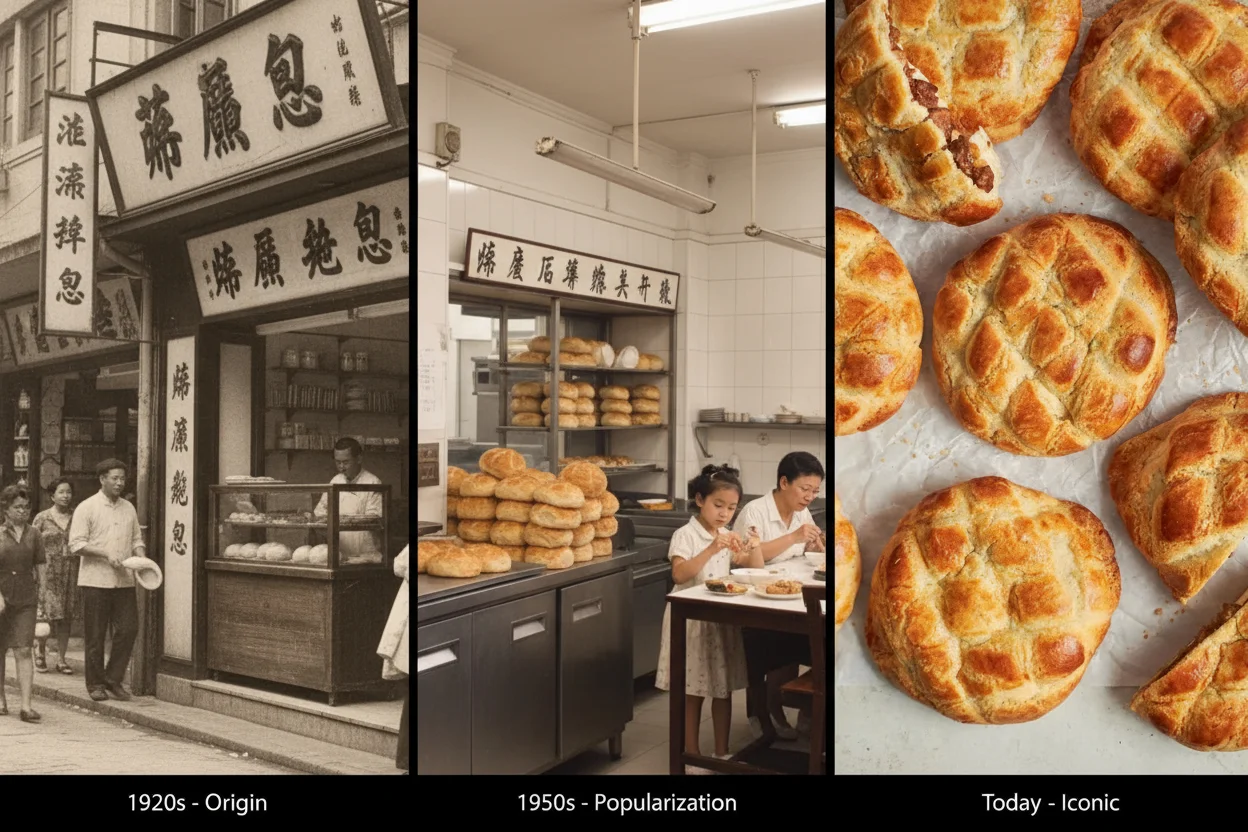
The pineapple bun isn’t just a pastry — it’s a story baked into Hong Kong’s history. From its post-war beginnings to its place in modern cafés, it reflects the city’s creative blend of Eastern tradition and Western influence. The golden, crackly crust and soft, buttery center symbolize Hong Kong’s spirit — warm, inventive, and unforgettable.
And now, you don’t need a plane ticket to taste it. Come to Rice Bowl Deluxe and explore our authentic Hong Kong menu, featuring freshly baked pineapple buns alongside other beloved classics. With three convenient locations across Edmonton, you’re never far from experiencing a true taste of Hong Kong — right here at home.

